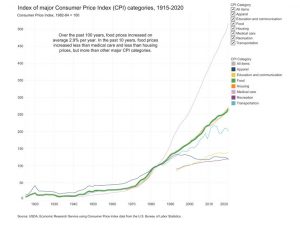 According to the IPCC and a 2021 study published in an academic journal Nature Food, the entire food system generates one third of carbon emissions. In a Reuters article, John Kerry, Special Presidential Envoy, remarked, “We can’t get to net zero, we don’t get this job done, unless agriculture is front and center as part of the solution.”
According to the IPCC and a 2021 study published in an academic journal Nature Food, the entire food system generates one third of carbon emissions. In a Reuters article, John Kerry, Special Presidential Envoy, remarked, “We can’t get to net zero, we don’t get this job done, unless agriculture is front and center as part of the solution.”
The food and agriculture system has initiated efforts to satisfy market needs for carbon reduction inside their companies and in the supply chains they currently deploy . These reductions are needed to meet Climate Change goals in the EU and North America.
The list above is of AgriFood corporations who have pledged carbon emission reductions and when they intend to make them. The list includes quantities, dates and the kind of emission reduction each company is pledging. An important point is that this list is incomplete and contains only a small portion of the agriculture and food companies that have–or will eventually–pledge reductions.
The significance of the Scope 3 emissions is that they represent changes in the related supply or delivery value chain that reduce carbon impact on the environment. They could be reduced truck mileage to carry goods or reduced idle time at delivery or at pick up. Scope 3 involves third parties, the farmer and farm supply chain, outside the company making the pledge.
But the current Scope 3 system of company by company effort will not be able to meet the pledged demand until there’s an automated and standardized contracting method that merges data collection and the market. The way things stand now, GHG reduction in food and agriculture will be expensive, very high maintenance and loaded with manual effort, if not impossible.
Let’s look at why.
First, to fulfill these pledges requires a lot of manual effort on the part of the farmer.The farmer will be required to farm differently which means using a cover crop between seasons, reduced chemical applications, and no-till farming. The changes, like reducing fertilizer applications, may ultimately impact yields.
Changing these historic farming practices will be required to create enough carbon reduction to meet the pledged commitments above. This effort will require a whole new channel to the farmer discussing a different method of farming from the past. And let’s keep in mind that agriculture is noted for its slow adoption of technology and new methods and there’s no reason to expect a different experience now.
Making it more complex, each company on the list above has a different system, method and discipline in place to accomplish this goal. Fulfilling market demand isn’t standardized or simple.
Plus, the market isn’t paying the farmer enough. This incentive is priced as a value of carbon per ton that the farmer can reduce by changing farming practice. Today demand is greater than supply. The price of carbon needed to change farming practice on enough acres will necessarily have to be higher than what is quoted today.
Second, it isn’t easy to connect with the farmer and have the discussions needed to incentivize historic farm management changes. Even existing channels will first have to contact the farmer to determine interest and discuss the price that will be paid to change farmer practice. Even after there is a signed commitment, it will take repeated meetings and eventually audits as well as soil samples. The process will be very labor and time intensive.
Lastly, separate stand alone and trusted agencies are needed to verify and certify the accuracy and quantification of the amount of farmer created carbon reduction. This will be the amount the farmer is paid for as well as the amount the Food and Agriculture company can calculate to mitigate their carbon impact. Today there aren’t enough established and reputable auditing and verification agencies to manage the pledged list above.
It is going to be difficult to fulfill the list of pledges above. Or we will see reductions and delays in the company’s ability to meet public commitments. The carbon price, driven by demand, will go higher.
To repeat – without an automated contracting method that merges data collection and the markets, GHG reduction in Food and Agriculture will be expensive, very high maintenance and loaded with manual effort, if not impossible.



